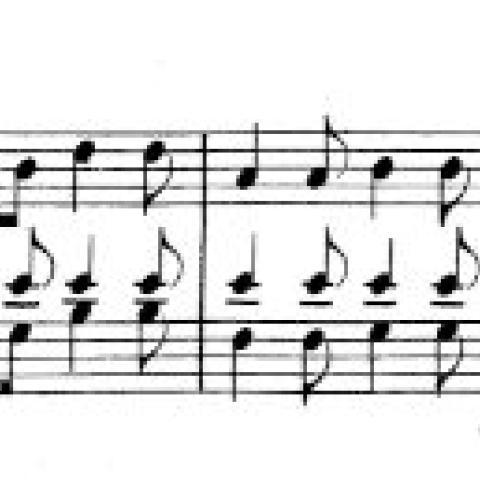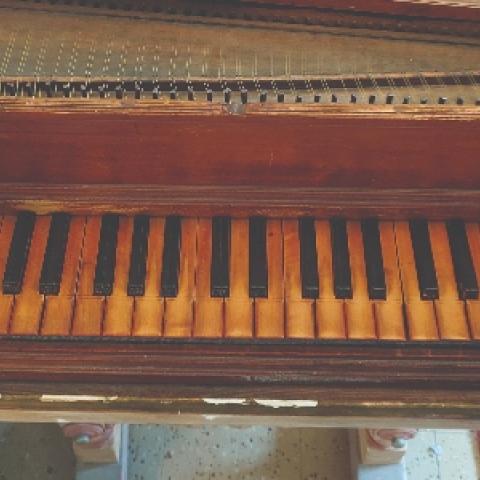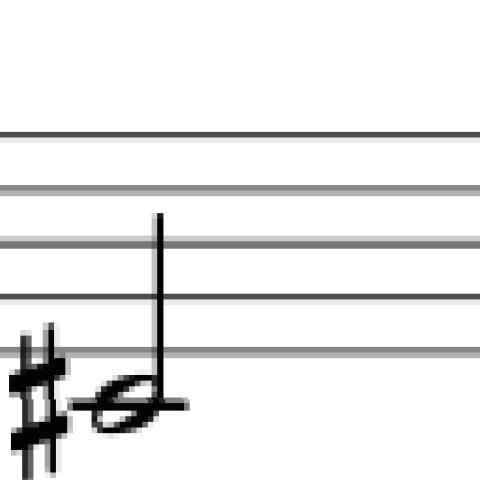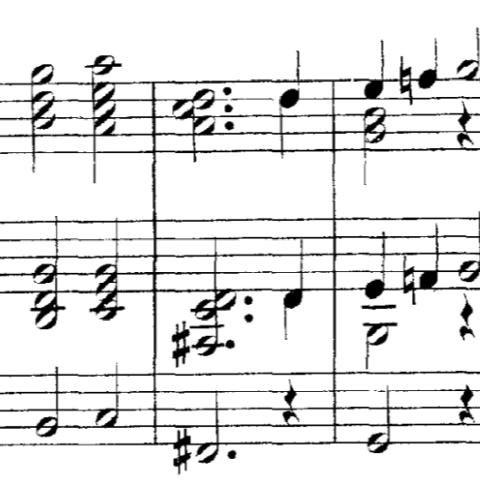
What is rhythm? That question has recurred to me as I have thought about and written about rhythm over the last few months. This is a prime example of putting the cart before the horse. After all, how have I been thinking about rhythm without first sorting out what it is? But there is no one answer to this very fundamental question, and we all work with rhythm without having established a clear definition.
I searched the internet with phrases such as “What is rhythm?” and “rhythm in music.” I was not looking for any answers as such, but to get an idea of some of the “headline” ways in which any sort of definition of rhythm is encapsulated. The results were very interesting. There were two basic kinds of results: 1) simple descriptions of some of the mechanics of the way that rhythm is depicted in some sorts of music, such as “Rhythm in music is the regular motion of half-notes, quarter-notes, etc.” or “Music has a regular beat sometimes indicated by a metronome marking;” and 2) complex but certainly intriguing philosophical discussions of concepts of rhythm.
One set of answers to the question of rhythm is contained in the fact that we work with rhythm when we make music. Music moves through time. Rhythm is predicated on the phenomenon of time passing as we listen to music or create it.
Music moves through time in a way essential to its nature. The same can be said for dance, though I have less experience talking to people who have had a deep involvement with it. Drama—live theater, television, movies—also moves through time, but in a way that seems meaningfully different as much of what is going on is dialogue. The semantic content influences the way one experiences the flow. (This is in part also true of vocal music.) Painting, drawing, sculpture, and other visual and graphic arts do not move through time the same way. Time passes as one experiences that sort of artwork, but visual focus is up to the viewer, as is shifting of that focus as a viewer encounters the work of art. There is no set time that the rhythm of viewing a painting, for example, will occupy overall, and no set ratio between times allotted to different parts of the whole. There is also no set order in which those parts will make themselves felt to the viewer, including any aspects of repetition.
I have always thought it fascinating that if you hit the pause button while a CD or any music file is playing, there is silence, whereas if you do the same on a video recording, a still image is displayed. Music has no existence without the passage of time, without motion and change.
Would a piece of music that existed in time but never changed seem to have rhythm in any sense we would recognize? This is an abstraction, since we do not encounter music that never changes. Maybe the closest we could come would be to play a note on an organ and hold it forever. But even that would change. There is always a miscellaneous fluctuation in the sound or in the way that the sound reaches the ears. Maybe a computer-based instrument could create a sound that really would never change even at the level of what the most sensitive instruments could measure or any ears could hear. If someone were to listen to (part of) such a piece would there be anything that they would experience as rhythm? Maybe not, but what occurs to me is that they would experience the inner rhythm of their own shifting reaction to the unchanging sound.
I see from framing the last thought the way I did that I want something to happen in order to accept that the quality of “rhythm” is present. So possibly rhythm is not just music moving through time, but things happening—things that we can hear—as music moves through time. I understand that this is sort of obvious and phrased in a deliberately simple or even naïve way. Maybe it is even really a tautology: if we are listening and something happens, we notice it. Since it happens across time, there is rhythm to it, if we define rhythm broadly or just decide to apply that word to that phenomenon.
But as the first set of answers that I found in my internet search reminds us, there is something specific about how we use rhythm, not necessarily what rhythm is in most of the music that organists, pianists, harpsichordists, or other classical musicians grapple with. That has to do with regular beat, which presumably means that the “something happening” happens at regular time intervals, and some sort of way of grouping that regularity. This is expressed with a naïve pretense that we do not know it perfectly well already. It points to a vast set of questions as to why this should be standard. How did it evolve? What does it do that is different from what we might be able to do with musical sounds not organized that way? Are there necessary relationships between this regularity and other aspects of music in this range of styles: melody, harmony, texture, and so on? To answer these questions is not the point here, since the truth is that no one knows, although there has been a lot of interesting research and speculation.
So where does any of this leave us as to the teaching or grappling with rhythm in our own playing? Grappling with rhythm means deciding when to play notes. The thought that has formed in my mind over the last few years is that there are two fundamental ways to do this, and they are opposite. They are both important, but very different in how straightforward they are to describe.
The first of these is the normal one for most music that we play. It is the one that we engage with all the time, the regular beat and meter phenomenon. I like to describe it this way: there is a regular beat that exists outside of the piece and before the beginning of the piece; the notes of the piece will fit in with that beat once the piece begins. That beat defines one note value, and the other note values are all clearly defined in relation to that one. There could be many other ways of describing this same thing. And to avoid its being a caricature, we should add that although the regular beat exists before the piece begins, it is in a sense a separate entity from the piece itself, and to a large extent governs the motion of the piece.
This is consistent with this concept that the actual notes sometimes deviate from the place where that regular beat says they should have been. That then becomes a matter of taste, of judgment, of awareness of a composer’s intentions and so on. Although this deviation is normal and frequent, it is defined as an aberration, and therefore it is often felt to require specific justification.
The second, opposite pole is a lot harder to describe. At any instant in a piece of music, there is some prevailing sound—a note, more than one note, the dying away of released notes, the ambient room sound, any combination of these things and others—and something about that sound will suggest when it feels right for the next sound to happen. That suggested moment is the appropriate time to play or sing the next note or notes. This perceived sense may sometimes be caused by the phenomenon of notes having come at a certain regular pace up until that moment. But it may also be caused by other factors that have nothing to do with regular pulse. These could include something about the inner behavior of the sound in the time since anything was last expressly played, shaped by the nature of the performing medium or by the room acoustics; anything about harmonic development and the ebb and flow of harmonic tension; something arising out of the desire for a certain kind of forward momentum; a need either to sustain a mood or to change the mood; and so on.
Each of these two poles can be found to a greater or lesser extent in any piece or passage that we play, and they interact in an infinite number of ways. The second idea is often most obviously at work in recitative. This only starts with “official” sung recitative. It also includes instrumental passages that imitate recitative and are marked as such—for example, the section in the first movement of Widor’s Sixth Symphony that immediately follows the opening about which I wrote in my September 2021 column (pages 10–11), or sections of Bach’s Chromatic Fantasy and Fugue, BWV 903, or Toccata in D Minor, BWV 565.
More interestingly, perhaps, it includes passages that strike us as being in recitative style without being marked as such. This applies to many other sections of those same Bach pieces, for example. The opening of BWV 565 is full of fermatas, unmeasured and written-out arpeggios, and tempo changes, all of which add up to making it an absolute necessity to find some source other than a grid of beats and accents to figure out when each successive note is best played.
The opening of Bach’s Fantasia in G Minor, BWV 542, is not aesthetically like the opening of BWV 565. It has no fermatas, tempo changes, or other direct suggestions that the rhythm suggested by the mapping of the notes onto the regular meter is not perfectly viable. When I played this piece decades ago, that was how I derived my sense of when the notes came. I recall being very focused on counting it correctly. Now, when I sit and read through it, I am more focused on listening to each sonority and trying to feel or intuit when what comes next should occur. This is not in the absence of an awareness of how the different note values stack up against one another or where the strong beats are. In this case it supplements that. The feeling of pressure or momentum to move to the next note or cluster of notes comes in part from an awareness of the imperatives of the beat structure. For example, everything about the opening chord and the act of moving away from the opening chord comes from sonority, ideally including whatever I can hear of room acoustics.
So how does this concept differ from a simple acknowledgement that it is possible to play ordinary measured music either rather strictly or more freely? This is a common though not uncontroversial subject to debate, be it in a friendly or heated way. One point I like about this approach is that it seems to be true. That is, whether it is something a composer intends or a performer tries to bring out, it is palpably the case that each moment in a piece of music has some sort of inherent momentum. It can vary in strength and be perceived differently by one person and another. After all, this momentum is something that arises in part from what a given performer or listener wants to do with a piece, their prior aesthetic predilections and tastes, and a host of other factors. This is never something that can be defined by one person for another: it must be heard and felt.
One way to demonstrate that this intrinsic momentum is real is to stop a piece at a random place. A jarring quality that experience creates comes from unfulfilled expectation or broken momentum. That momentum cannot be just that of a regular beat pattern—they stop all the time, and it does not bother us.
Another matter that I like about this concept is that it ties in with the notion of playing a piece as if you were improvising it. Even if your sense of the directionality and momentum of the sonorities does not lead you to do anything very different from a fairly strict rhythm, as soon as you start listening for that momentum you are behaving like someone who is creating the piece.
Also, just as a matter of my own discipline, trying to listen like this prods me not to let my attention and hearing faculties wander too much, to pay attention and to care about each note. This is one of the key points in working with students around this idea.
Next time I will write in some detail about that: how to introduce this idea to students, what some if its advantages are, and what some of its pitfalls are, how to help students reconcile this approach with whatever amount of respect to the notated rhythm is due, if that ever rises to the level of conflict. I will end this series about rhythm with notes on a few stray ideas and observations about rhythm that are either germane to the above ideas or interesting on their own account.






